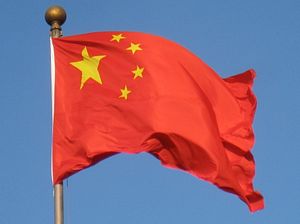As of Wednesday, the new strain of coronavirus (officially dubbed COVID-19) has claimed more than 1,100 lives, and the number of infected has surged to over 44,000.
As the severity of the crisis escalates and conflicts unfold, reports and analysis from international news outlets have frequently referred to the epidemic as a legitimacy problem for the Chinese leadership. Such observations have adopted a confined government-vs-public dichotomy to conclude that public discontent generates disapproval in the system. However, a more complex equation that includes and differentiates multiple actors would be required to assess the virus’ impact on public sentiment. This would include evaluations of individuals’ perceptions of their local government, the central government, and the Hubei/Wuhan government and its population. With that more holistic view in mind, it is questionable whether this crisis would affect the central leadership’s legitimacy.
While Wuhan’s medical conditions have appeared to be “almost a humanitarian disaster,” and points toward a governance failure, such scenarios are confined to Wuhan’s 11 million population. It is the unsettling idea that 5 million people from Wuhan had left before the announcement of the outbreak that has provoked far-ranging public paranoia. State media outlets and government officials have urged people not to discriminate against Wuhan and Hubei residents, but the humane treatment of fellow Chinese has become a lesser concern for the national public.
Consequentially, individual assessments of government actions have become tightly joined to the effective prevention of an inflow of “outsiders” (外地人). Many average citizens have joined the local authorities as culprits in enforcing draconian restrictions on public mobility. Without government orders, villages have set up walls and barriers, and some individuals were locked in by other tenants. Residential complexes have self-quarantined and rejected outsider access in ways that violate government orders. Such cases are so popular that they became a trending topic on China’s Weibo social media service. These conditions have surprisingly enabled the government to turn citizens into informants in a way reminiscent of the Cultural Revolution more than four decades earlier.
These signs indicate that popular discontent and approval toward the political system may be more case dependent. Under widespread paranoia, a local government’s credibility may be boosted through the application of assertive and indifferent measures. In such cases, not only can government-public unity be enhanced, but harsh government action may even lead to increased trust in the political system. The Henan government, for instance, has won praise for stringent policies that include shaming homecoming residents from Wuhan; the topic #hardcoreHenan# trended on Weibo.
Calls for the Wuhan government’s resignation were left uncensored, likely as an attempt to quell the public’s anger over the virus outbreak by directing the discontent and blame to the Wuhan municipal and Hubei provincial governments. The indication is that central leadership is manipulating popular discontent, and seemingly with success.
In great contrast to the guilty image of the Wuhan/Hubei government, the central government has appeared to keep unruly individuals and incompetent officials in check. Beijing released official statements criticizing and punishing vendors for raising commodity prices. Reacting to a now-censored viral WeChat post critical of cumbersome bureaucratic formality, the leadership came forth to criticize the practice of “combating the disease by filling out forms.” After the Huanggang Municipal Health commission sparked fury for its inability to describe the city’s dire situation, an investigation team was dispatched from the central government rather than the provincial government. When the Wuhan Red Cross – a quasi-government organization – sparked public outrage by “mishandling donations for the coronavirus,” many called on the central government to deliver punishment. Such cases demonstrate the varying perceptions the Chinese public holds toward different government units. The discontent in the system generated by one government institution may be countered by the approval of another. In most of these incidents, the central government is showcased as quick to respond to public concerns and seen as cleaning up the messes left by inept, guilty officials.
The greatest challenge came from the national outrage instigated by the death of the “whistleblower” Doctor Li Wenliang. While there were early signs of attempts to censor public grief, the government was quick to adapt to the situation. The central government reacted quickly by dispatching a team to investigate “issues related to Dr. Li Wenliang that were reported by the public.” State media and official social media accounts mourned with the public. Given the Wuhan government has shouldered most of the blame, the central government’s skillful censorship and media framing have guided online expression away from discussions of the systematic flaws that produced such an outcome. As a result, the discontent with the system that emerged from Li’s death was fairly short-lived and lacked cohesion.
Chinese authorities, as remarked by Sergey Radchenko, are “demonstrating an ability to cope, a willingness to take unprecedented measures — logistical feats that may actually increase the regime’s legitimacy.” Approval of the central leadership may see a boost after China has weathered through the epidemic.
The real trouble probably won’t be the crisis per se, but the slowing growth that follows. By then, the government would have fewer perceivable scapegoats to blame for the public’s heightening economic pressure and lower quality of life.

































